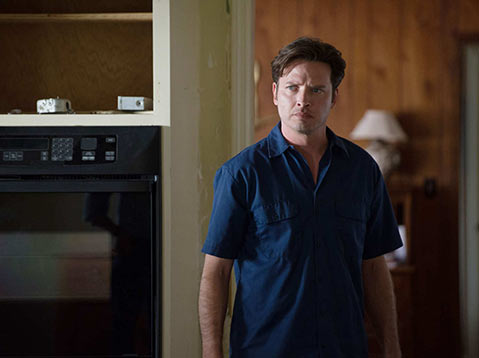‘Rectify’: Southern-Gothic-Flavored Family Saga
Sundance Channel Series Takes TV to Unexpected Places

Part of the oddly magnetic — if melancholic and sometimes sinister — allure of the unusual and binge-worthy TV series Rectify (now in its fourth, final season) relates to a key narrative hole in its middle. That hole, spinning off into metaphorical mystery zones, is the nearly 20 missing years in the life of young Daniel Holden, wrongly (we assume) convicted of raping and murdering his high-school-age girlfriend, Hanna, and released from death row after belated DNA evidence draws his guilt into question.
Fast-forward to life “outside,” and the sweetly aloof Daniel is a free man — at least in the non-incarcerated sense. He is death-defying but is greeted by skeptics and connivers in his Georgian hometown, along with repair work needed in the family-relations department. But the real barrier to a true sense of “freedom” is interiorized: He’s haunted by demons, but his soft-edged, detached manner of speech and actions keep details of what’s going on inside obscured. Beguilingly played by Canadian actor Aden Young, Daniel is one of contemporary television’s dreamier characters, making his periodic dream scenes — with echoes of “life” on death row, bonding with his doomed friend, and memories of being raped — all the more integral to the series’ unsettled atmospherics.
Created by Ray McKinnon, Rectify is a splintered and multi-limbed family saga, a Southern Gothic–flavored web of small-town hearsay and truth bending, suspicions running amok, and the nature of reality thrown up in the air. It’s not the typical domain of TV, although we recognize the tools and tricks of the serialization trade, the stretching out of segments and detours into subplots and sideline characters.
Although we find some natural parallels between Rectify and Making a Murderer — the documentary about the wrongly accused and released Steven Avery, later convicted for another crime — the distinction of real life versus a writer’s elaborate, serial scheme changes everything. These imagined characters shape-shift episode by episode. In a particularly hypnotic episode in the middle of Season 2 of Rectify called “Donald the Normal,” Daniel finds himself in Atlanta, almost accidentally trying to reinvent himself after meeting a cultured woman in an art museum. But he doesn’t have the necessary skills, wits, facts, or backstory to come close to pulling it off. There are huge holes in his story — and one in particular.
By the final season, he has been banished from the hometown and is more pragmatically reinventing himself from the ground up through a post-prison transition house in Nashville and working as a warehouseman with a fleeting love interest with an artist (Caitlin FitzGerald), realizing his presumed misfit status for a “normal” life. The last season’s most cathartic moment comes early, as he speaks with his transition house leader and briefly breaks through his shell of cryptic composure and channels his dark passage in years of isolation: “You go deeper into yourself. It’s a perverse contradiction. I don’t know what is real. I don’t know what I did or didn’t do. That’s my truth.”
Toward the end of the season, the episode title “Happy Unburdening” refers both to his self-delving work in therapy and the purging of possessions in his mother’s attic (via eBay) as various family members take on new life twists, and he wends toward presumed exoneration.
One production downside is an intrusive musical score, which bullies us into feeling one stock emotion or another, contrasting the script’s more ambiguous emotive turf. The musical cues could be cut by half and made twice as effective. Ambiguity and the nagging mystery of the holes in the mega-story is what keeps us tuned in, wanting more. Even the “happy ending” moments lightening the narrative load are fraught with dark prospects and unanswered questions. Rectify goes places we don’t expect TV to go, with a pithily mumbling dreamer as hero/mystery man.



